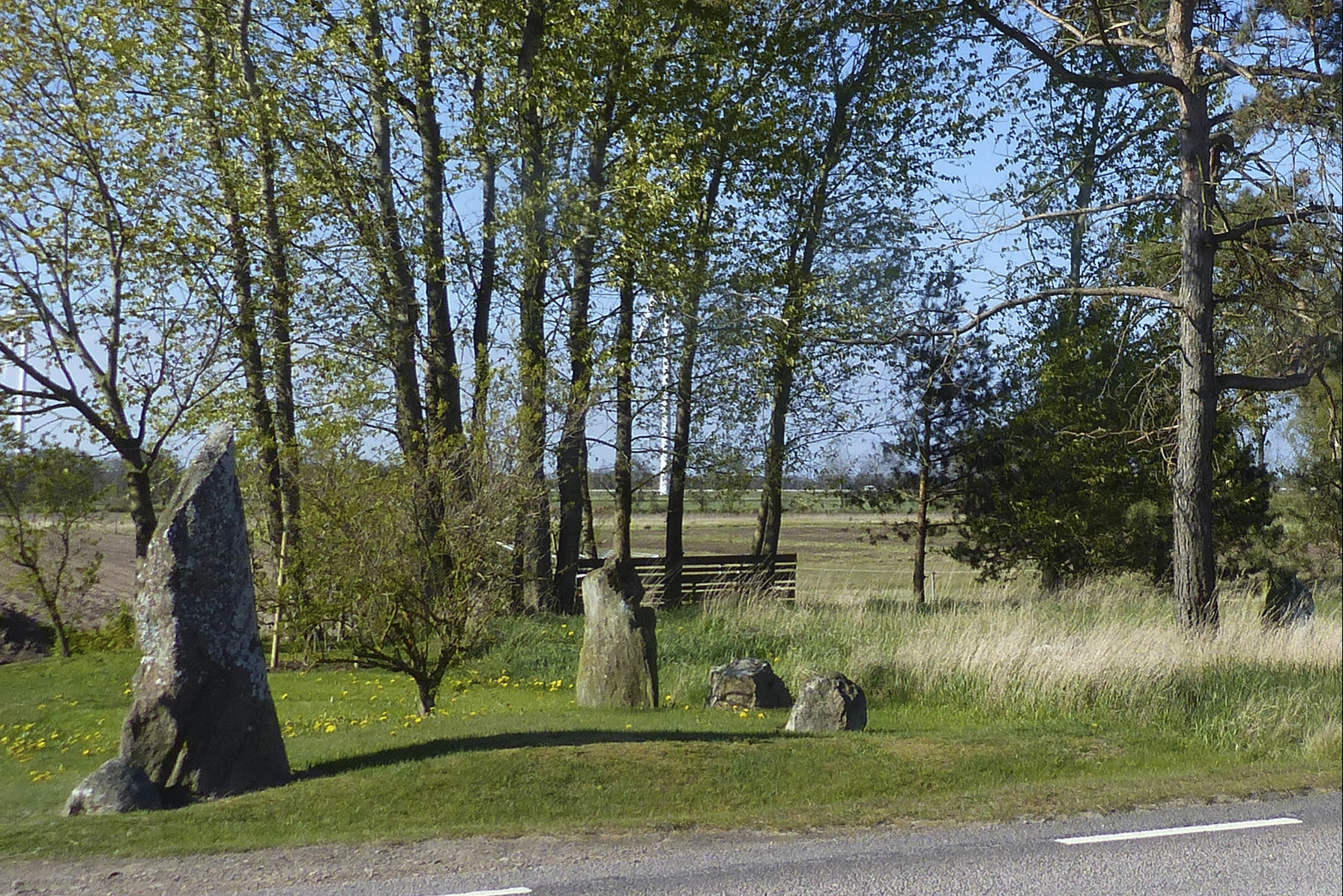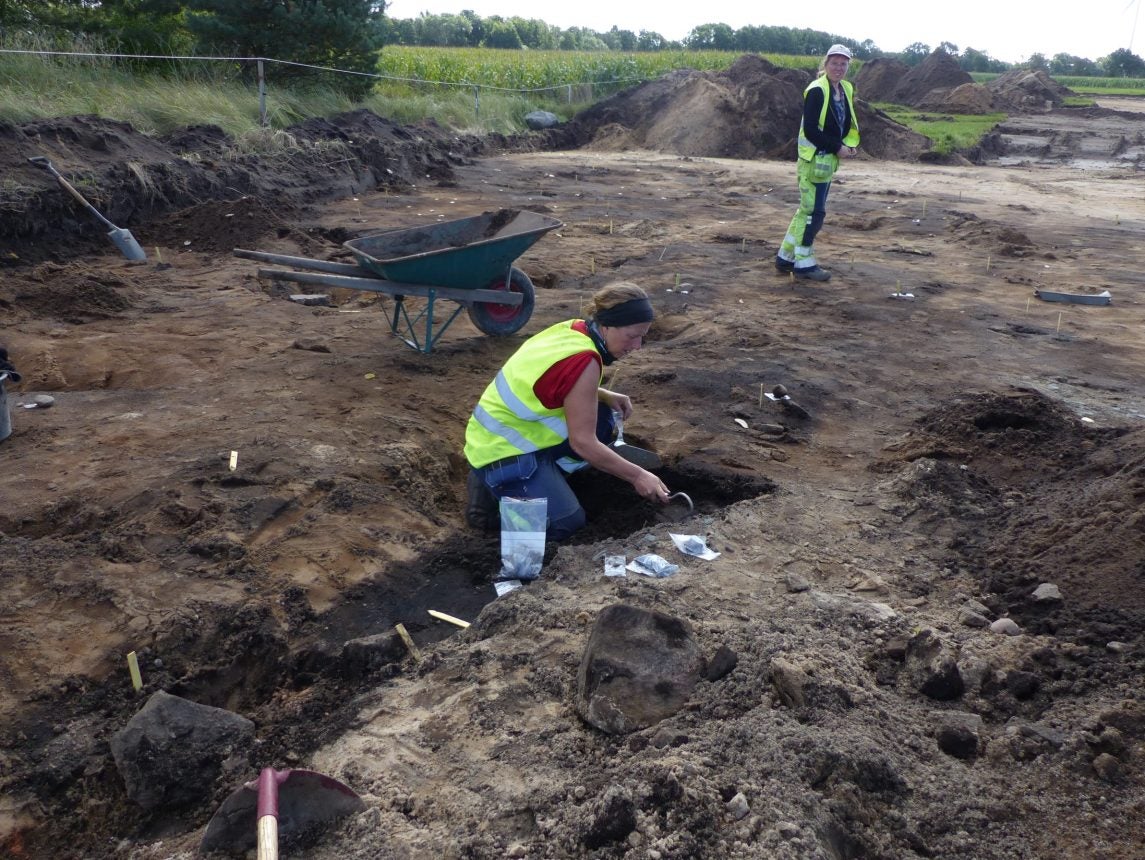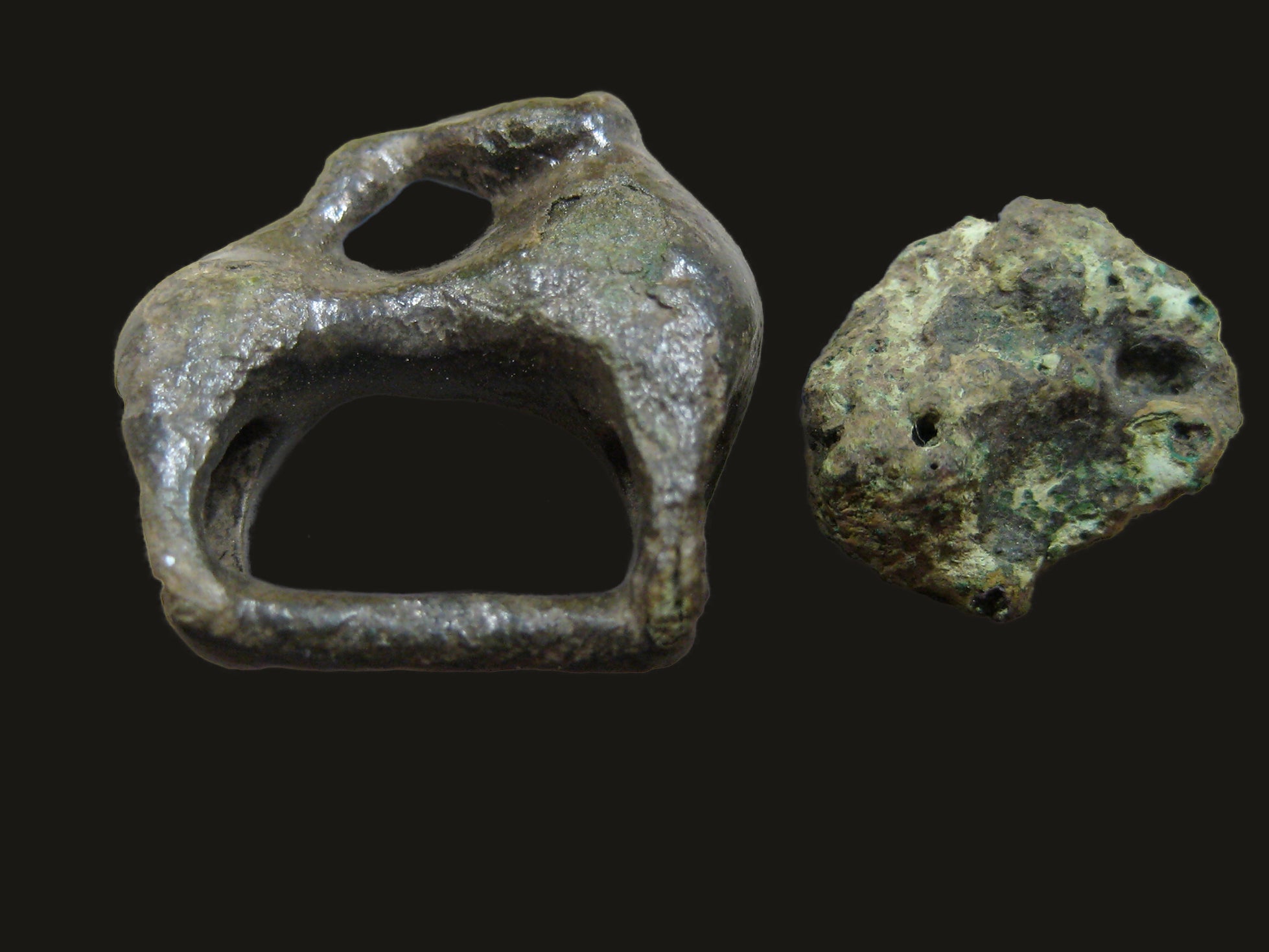Mysterious Viking burial shaped like stone boat discovered
Area was likely home to village that expanded vastly 1,200 years ago, researchers suspect
Archaeologists in Sweden have discovered a mysterious Viking Age burial ground with graves shaped like stone ships.
As many as 139 of these graves have been found so far at the site near Varberg, containing remains of people and dogs as well as a trove of artefacts.
The cemetery is located near two ancient trade routes: the Tvååkersån river and a road known as Järnbäravägen, said Arkeologerna, a division of the Swedish National Historical Museums.
As this land was used over the following centuries, ploughed down and levelled to cultivate crops and create pastures, the ancient superstructures disappeared and the Viking Age graves were broken.
A dig, however, unearthed the remains of a 50-metre-long ship-like formation made from stones on a ridge near the burial ground and three large shipwreck-like stone formations.

The dig also found a square pit containing three large fire pits and a layer of fire-cracked stones, archaeologists said. The square pit was likely made to help create good airflow for a pyre above the ground.
Archaeologists have so far found about 20 vessels, human and animal bones, iron arrowheads, and woven weights at the burial site as well as costume buckles, ceramics and a clip of an Arab silver coin dated from 795-806AD.
Most of the artefacts seem to be “heavily affected by fire”.

“After the dead have been burned, unburnt animals have been placed on top, before finally closing the graves. The most common were cattle such as cows, and it is probably about food sacrifice,” project manager Petra Nordin said.
It is not yet clear where the people buried at the cemetery were from.

Archaeologists suspect the Tvååker area, mentioned in early historical sources, was home to a village that expanded heavily during the older Viking Age.
This makes it an important site to unravel the puzzle of Iron Age habitations in the area.
Join our commenting forum
Join thought-provoking conversations, follow other Independent readers and see their replies
Comments
Bookmark popover
Removed from bookmarks